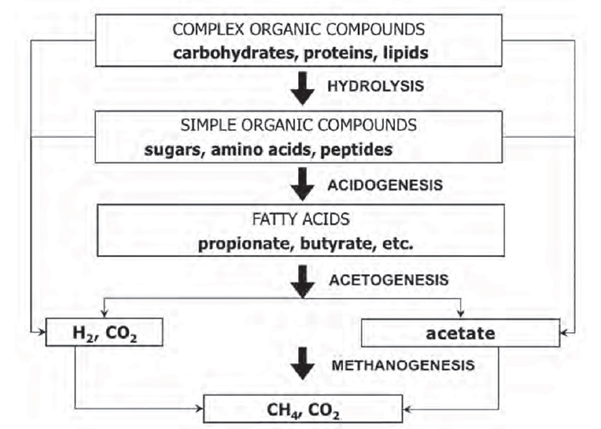Cleanergy Tech Solutions Pvt. Ltd.
Anaerobic digestion occurs in several stages, each facilitated by different groups of microorganisms. These stages include hydrolysis, acidogenesis, acetogenesis, and methanogenesis. Here’s a brief overview of each stage:

These stages are interconnected and depend on the presence of specific groups of microorganisms to efficiently break down organic matter and produce biogas. The overall process is sensitive to environmental factors such as temperature, pH, and substrate composition, which can influence the efficiency of biogas production.
Empower Organic Farming with Biogas! Convert Waste into Wealth while Cultivating Sustainable Agriculture. Let’s Grow Together for a Greener, Prosperous Future!